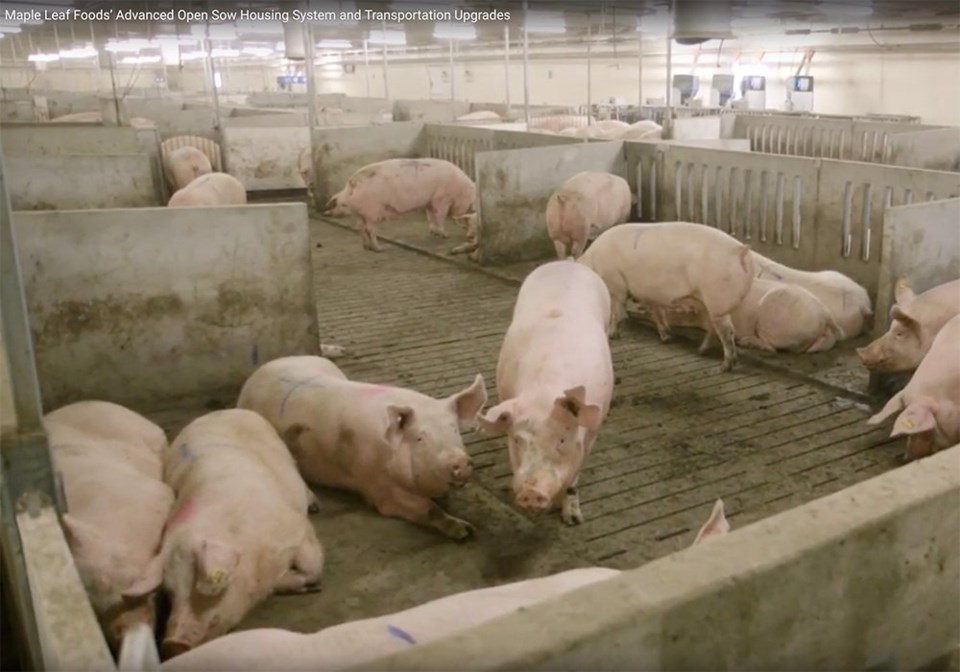Maple Leaf, which produces about 40 percent of the pigs it uses in its company-branded meat, says its pregnant sows will all live in open housing systems it has been incorporating since the mid-2010s.
The move was based on growing consumer concerns about the welfare of sows in gestation crates, which don’t allow pigs to turn around, gather with other sows, exercise or play. The crates are used to prevent aggression among sows, which can lead to bad results for both the mothers and their coming litters, but are not necessary.
“Ensuring the animals in our care experience the best possible environment at Maple Leaf Foods is the right thing to do and an essential part of our sustainability commitment,” said Maple Leaf president and chief executive officer Michael McCain in a Nov. 21 news release.
“Our progress in eliminating gestation crates in our sow barns across Canada is a significant milestone as we proudly lead the industry towards a more compassionate approach to animal welfare.”
The company says it is a North American leader in the transition out of gestation stalls. The company’s Greenfield Natural Meat Co. pork will almost entirely come from open housing systems by the end of 2021 as more stall-free pork becomes available.
The Canadian pork industry agreed in 2014 to eliminate gestation stalls by 2024, but Maple Leaf decided to move more quickly.
The evolution has been controversial. Many producers in Canada and the United States have resisted pressure to move quickly due to the costs of re-engineering sow barns and the complexities of managing a different husbandry system.
But open housing is now standard in the European Union and decades of research have shown that open housing can generally be as productive and affordable as the conventional system.

